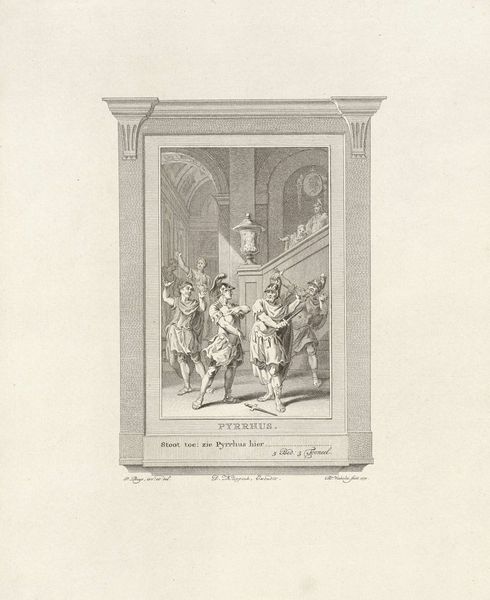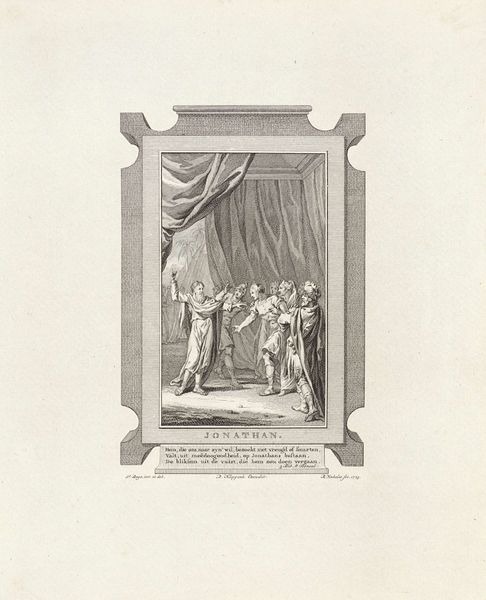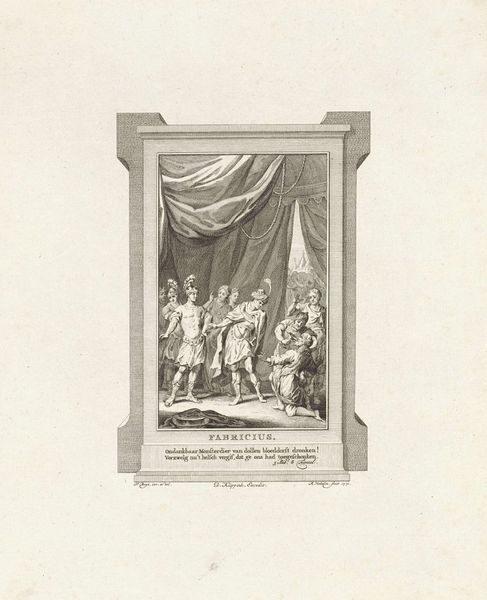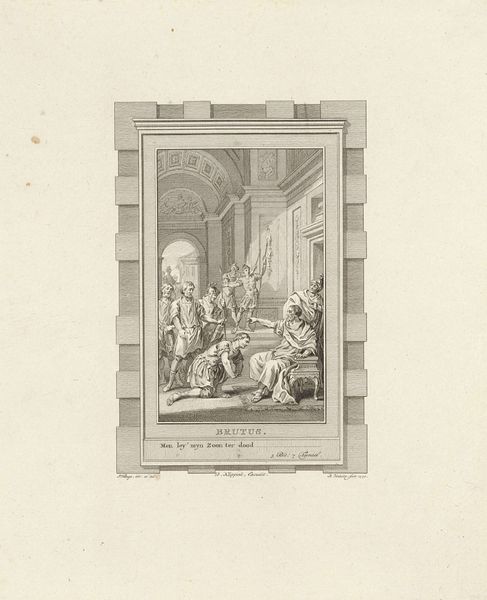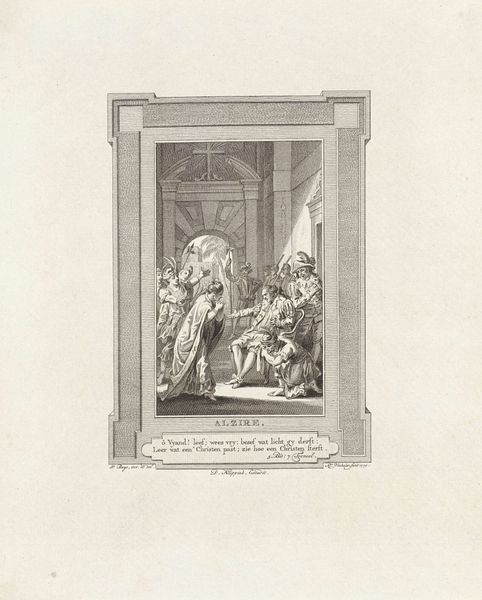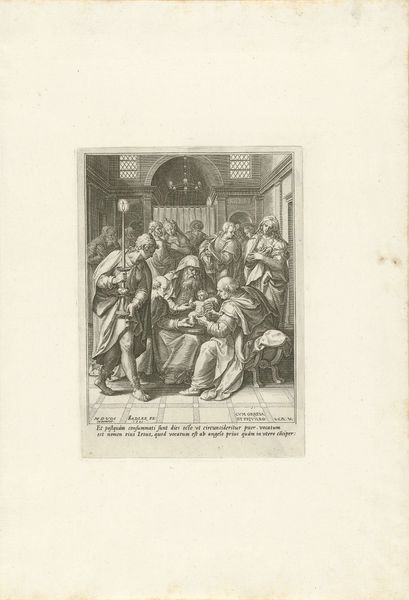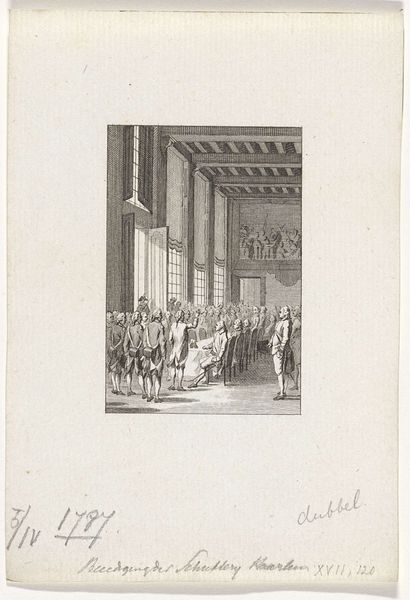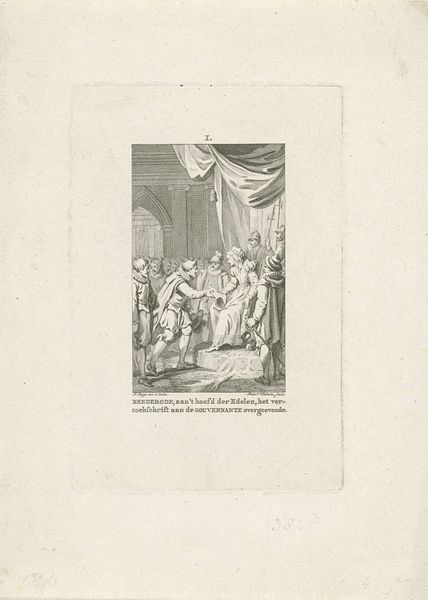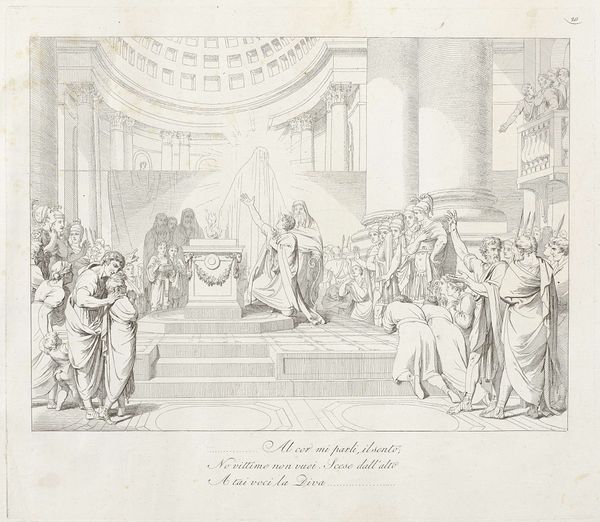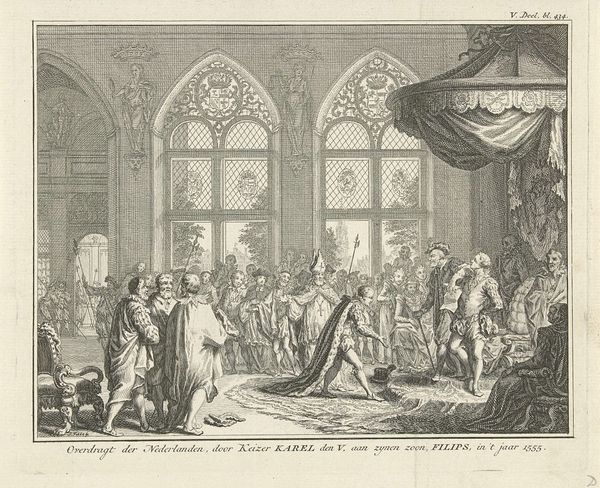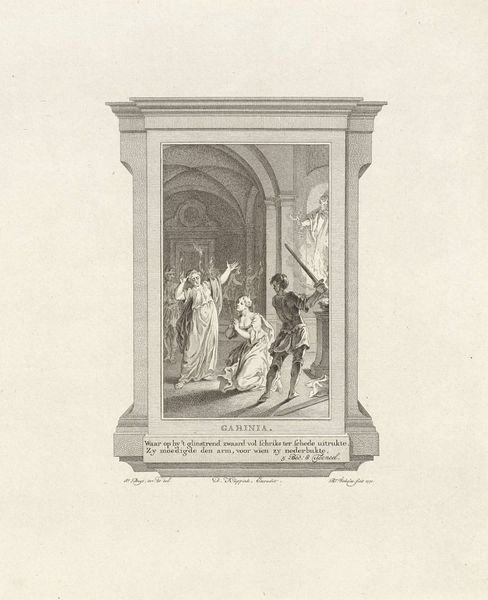
Dimensions: height 264 mm, width 216 mm
Copyright: Rijks Museum: Open Domain
Curator: This print, currently held at the Rijksmuseum, is titled "Soldaten leiden een man weg op bevel van de machthebber," which translates to "Soldiers lead a man away on the orders of the ruler." Reinier Vinkeles created it in 1772. Editor: The overwhelming mood is somber, of course. It's quite austere. That line work really amplifies the tension. You can feel the harsh weight of power dynamics at play here. Curator: Indeed. The stark lines emphasize the historical and social realities that underpinned power during this period. This print is clearly steeped in an academic style, so it idealizes those power structures as much as it represents them. How do you read those choices? Editor: Right away I'm struck by the ruler's pose and gesture, almost theatrical. The spread arms, the robe—classic iconography of authority, almost godlike. But look at the soldiers, their gestures are less formalized, raw with force, illustrating the practical application of authority. Curator: The artist is certainly playing with historical tropes. The composition reminds me of theatrical staging, which heightens the sense of drama but also, I would argue, contributes to a certain artificiality. It speaks volumes about how history was portrayed, manipulated, and disseminated at the time. Who has the power to interpret history, right? Editor: It's almost like a play in two acts. You've got the authority figure on the higher platform, staged in almost holy, untouchable light, juxtaposed with the violence being performed on the lower ground. The very act of being displayed like that elevates the scene into symbolic space. Curator: The print serves as a fascinating lens through which to examine the evolving notions of justice, governance, and social control within eighteenth-century Dutch society. What story do you imagine viewers at the time might read into such a piece? Editor: Well, the scene invokes classical virtues of power, it definitely seems like a constructed ideal. But beneath it, the emotional symbols point to potential problems: coercion, blind obedience... It makes one think of how long those elements persist through culture. Curator: It’s sobering to think about that continuity. Editor: It really is. Examining the long cultural echoes through artistic choices definitely gives us something to consider.
Comments
No comments
Be the first to comment and join the conversation on the ultimate creative platform.
